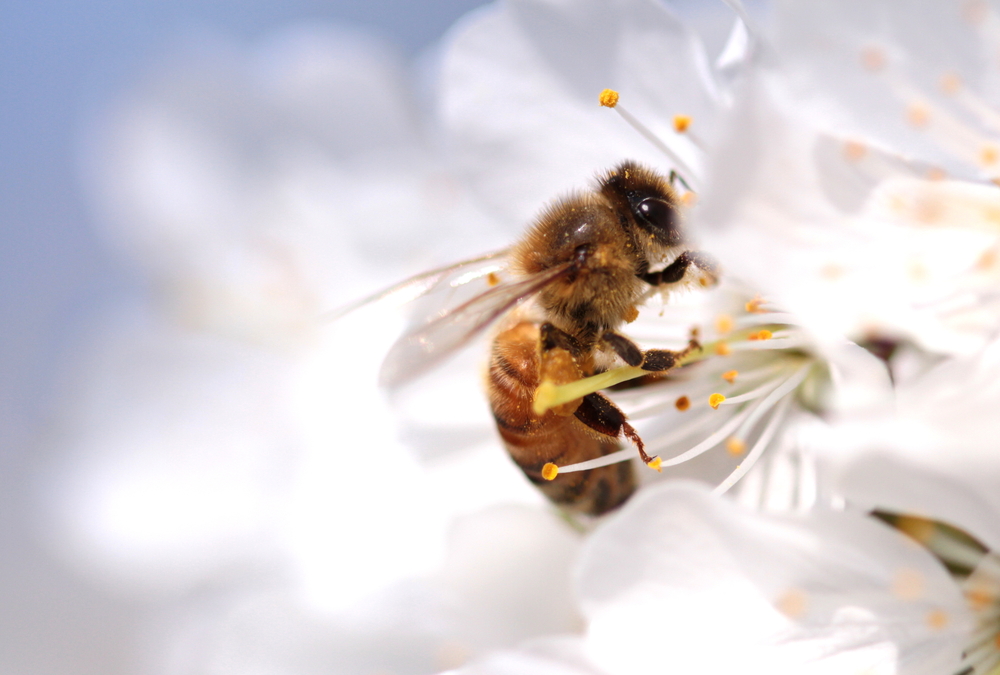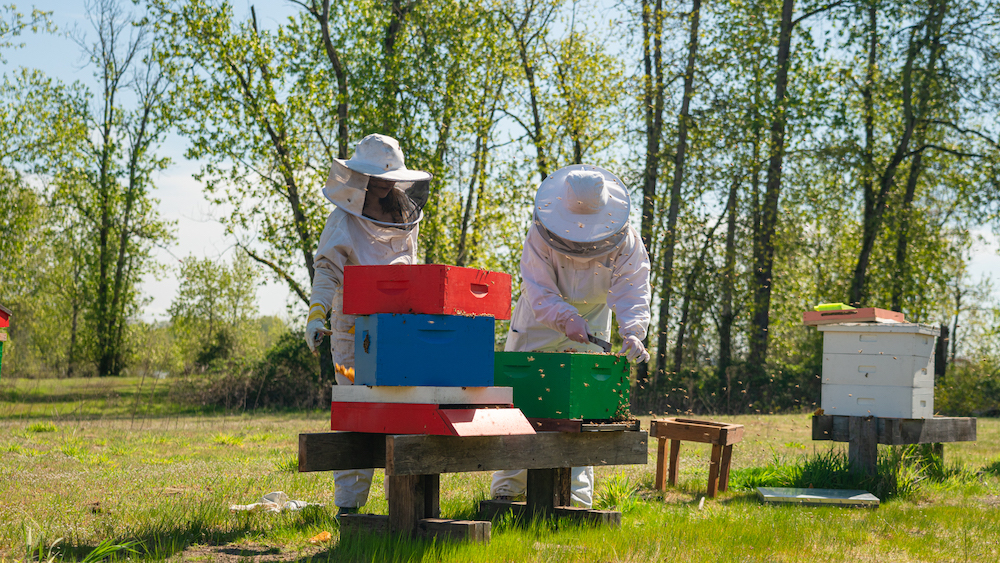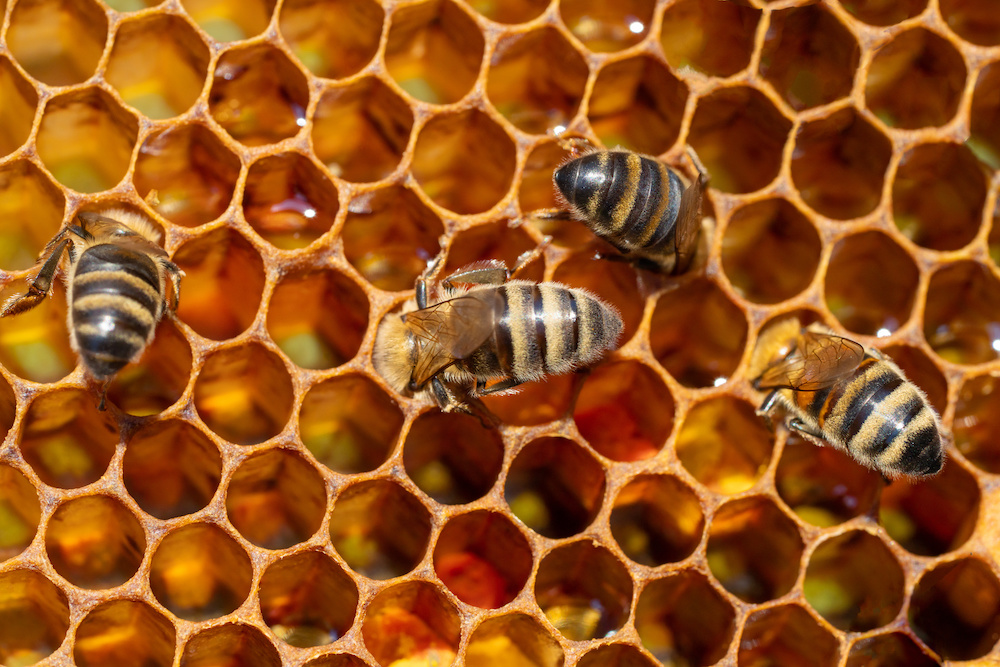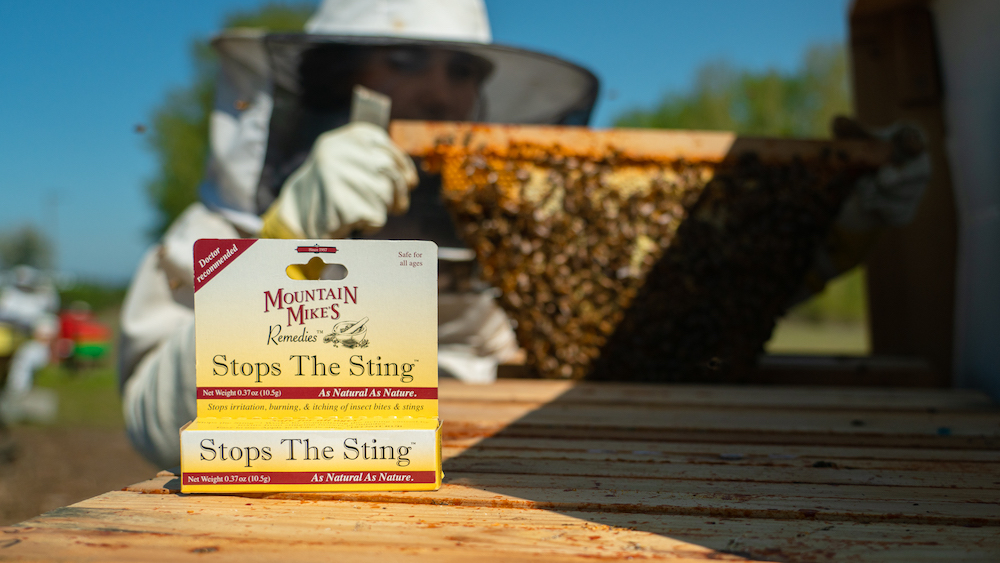Posted by Isabella Jost-Dixon on 18th Oct 2020
Help Save the Bees
Something You Should Know

This is interesting - Bees are responsible for pollinating nearly 75% of flora in the United States, ranging from fruits to flowers and everything in between. In fact, bees have been evolving alongside plants for thousands of years, meaning they have a special symbiotic relationship. Crazy, right?! Unfortunately, things like over-forestation and pesticides, for example, are threatening the welfare of bees. Because of this, places like Willow Bar Farm in Portland, Oregon, have sprung up with a goal to help reduce and reverse the damage humans have done to not only the bees but to insect populations in general.
The Good Part
Rebekah Golden and Emily Parker have created a project called “Bee & Bloom” that helps provide bees with the plants and habitats they need to go about their natural day-to-day activities. They emphasize the need for providing plenty of seasonally blooming plants as well as safe nesting areas. By this we can reduce the damage caused to the North American bee population. (Bee sure to check out our visit with Bee & Bloom here!)

Basics of Bees
North America has over 4,000 different bee species out of the 20,000 total that exist worldwide. But there’s no denying the bees are endangered — in 2018 alone, nearly 40% of the bee population in the U.S. was wiped out. To better understand how that directly affects us, we need to consider that bees are responsible for pollinating nearly $15 billion of crops annually. That’s why, if we don’t do something soon, our food supply may be threatened as well.
And while honey bees might be what first comes to mind, they’re actually doing pretty well since many colonies have been domesticated. The bees we need to worry about are native bees, many of which live in the ground, are stingless, and much more sensitive to changes in their environment.
A good example of a lesser known species of bee comes from the Yucatan Peninsula in Mexico. The Melipona bee species was cultivated over 3,000 years ago by the Mayans and originally created their hives in hollowed-out trees until the ancient Mayans discovered they could place the hives into clay pots and raise the bees easily there.
And unlike cultivated honey bees, their comb isn’t built on a vertical frame but will take on the natural form of wherever it’s built. Their honey has a special citrus flavor and is often lighter colored and thinner in consistency than other honey; it can sometimes even be clear and as thin as water. The amount of honey these bees produce each year is much less in comparison to other species (2 versus 70 liters), which is why scientists believe it has health benefits use it more often for that purpose than as a sweetener.
Because these bees aren’t able to sting, bee keepers need to take special measures to protect the hives by constructing “booby traps” to deter potential predators. Today, very few people still raise these bees and it’s becoming a lost art. Despite the number of Melipona beekeepers slowly dying out in Mexico, there has been a new interest in raising the Melipona bee in Cuba recently, so we hope this unique species will continue on for many years to come.
Facts is Facts
The fact is that bees — even honey bees — are all around, some pretty amazing creatures and can do some incredibly interesting things you may never have realized like:
- Did you know bees can recognize faces? Yup, they can look at a face and see all the different features — your eyes, ears, nose, mouth, and even eyebrows! They’re so good at it that scientists are studying them to help improve face recognition technology.
- Also, in a colony, each bee has their own unique role. Just like humans in an office have different jobs, so do bees. Unlike in an office though, bees will sometimes change their “job” and, when they do, their brain chemistry will change as well. This helps them work at maximum efficiency. Maybe scientists should study that trait!
- Bees also have personalities, just like people. For example, some bees are more outgoing while others tend to keep to themselves. Kinda like how people are introverted or extroverted. This makes researchers think that bees can feel emotions, making them pretty sophisticated insects.
- They also are natural navigators. Not only can they figure out the most efficient route traveling from flower to flower, but they can also use the sun as a compass. And if it’s cloudy out, not a problem — they use polarized light to find their way. Don’t know what polarized light is? Me either, but bees do. ‘Cause they’re awesome!
- And, believe it or not, bees have even helped us catch criminals. In 1989, criminologists developed a system called “geographical profiling” after realizing that just like bees, serial killers stay within a specific geographic area. By looking at the locations of the crimes, profilers are able to narrow down the most likely location where the suspect lives.

When You Get On a Bee's Bad Side...
While we should clearly be grateful to bees for the important role they play in pollinating our crops, there’re tons of other ways they’ve helped humans out. The unfortunate fact remains though that they still DO sting, and it’s not crazy to think that we’ll all experience that happening at least once in our lives. I know I have, and it definitely wasn’t fun. So, in the case that you or someone you know is stung, there are a few simple things to remember.
- You want to start by removing the stinger. Once you’ve done that, it’s important to wash the area with soap and water, which will remove any germs that might be lurking around.
- Apply Stops the Sting. Not only is Stops the Sting effective but it’s very easy to apply, has no odor, and is made from natural ingredients. Just remember it’s very important to dab Stops the Sting rather than rub it in — rubbing it will disperse the venom, something we don’t want to do! Instead, cover the sting and let it do its magic.

Now, numerous old wives’ remedies abound about what you should apply to help with a sting. These range — ironically — from honey to apple cider vinegar and numerous different herbs and oils. Of course we recommend Mountain Mike's Remedies - Stops the Sting (go figure… :-).
Also, it’s important to note that while the majority of people will only experience mild discomfort from a bee sting, about 5 to 7.5% of people have severe allergic reactions. If this is the case for you or a loved one, it’s important to seek medical help immediately and always keep an up-to-date EpiPen on hand.
Ya know, bees are very special creatures with a ton of different talents. And that’s why it’s important to do our part to make sure bees are around for many generations to come.
In closing, we’d like to give a big shout out to Bee & Bloom for all the fantastic work they’re doing to save the bees! And we encourage you to do your own research and support the many organizations that are helping the shrinking bee population. Every little bit counts!
~ Mike and the Sting Stopper Team
https://www.usgs.gov/faqs/why-are-bees-important?qt-news_science_products=0#qt-news_science_products
https://www.businessinsider.com/insects-dying-off-sign-of-6th-mass-extinction-2019-2
https://pubmed.ncbi.nlm.nih.gov/21636277/
https://www.newscientist.com/article/dn14423-bees-help-police-close-in-on-serial-killers/

